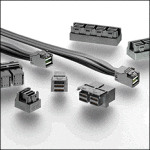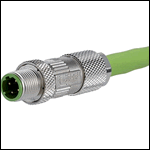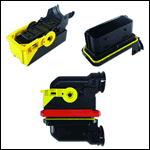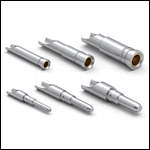Five Things to Know About Circular Connectors
Circular connectors are used in a wide range of applications including industrial, energy, medical, and military. Here, ODU examines current and future trends in five things to know about circular connectors.
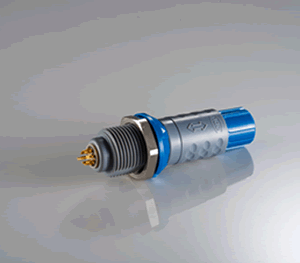
The ODU MEDI-SNAP combines reliable connections with a unique color and mechanical keying system to offer the ideal connector solution for medical device system designers.
From industrial electronics and energy technology to medical and military technology, circular connectors are used in many different markets and applications. Here are five main trends for the future:
Miniaturization
While miniaturization is not a new development, it continues to trend nonetheless. This goes for both the size of the circular connector systems and the electronics, where more is being installed in less and less space. The inner workings of circular connectors are becoming increasingly important. What are the smallest possible sizes that are feasible in practice? And how many contacts can be integrated? By asking questions like these, connector manufacturers are pushing the limits of technology further and further.
High Data Rates
These days, there is a growing need to transmit more information, faster. High-speed data transfers are critical in a variety of fields and are no longer limited to offices, server rooms, and dry/clean environments. Considerations in choosing the appropriate circular connector should include quality, throughput, and quantity of data that can/will be transmitted without loss or interference. Manufacturers are combining small sizes, more flexibility, high numbers of mating cycles, and maximum transmission reliability to create flawless solutions. This allows conventional communication protocols to transmit data at transfer rates from 10Mb/s to 10Gb/s or USB 3.0 up to 5Gb/s.
Hybrid Solutions
The need to fulfill a variety of functions with a single component is on the rise. The obvious advantages include increased networking capabilities, new technological possibilities, and resource efficiency. Connector manufacturers now offer tailor-made hybrid connectors that provide the customer with efficient, ergonomic solutions in a single connector system. They combine the transmission of power, signals, data, or other media in one interface.
With a hybrid connector, the customer can handle all these tasks in a smaller footprint. Simplified handling is another benefit of hybrid circular connectors, as is preventing faults and saving time. In medical technology, for instance, hybrid interfaces offer certainty in application: A single mating action establishes a perfect connection in which it is impossible to forget a plug or connect it incorrectly, which can save lives in emergencies.
Modular Solutions
Circular connectors are modular solutions, too. The customer has a choice when it comes to size, number of contacts, inserts, fittings, and many other parameters. Technology portfolios offer a large selection, and not just for the housing: There are countless possibilities for the inner workings of the circular connectors. A modular system provides a connector that achieves a perfectly secure connection and is ideally suited to the specific application at hand. The manufacturer creates the right premium product for a customer’s specific requirements with expertise in implementation.
Application- and Customer-Specific Solutions
Circular connectors must function smoothly and flawlessly, even under extreme conditions such as pressure tightness up to 500 bar, or in critical applications, such as medical, where they must meet the EN 60601-1-3 standard as well as other strict requirements. That’s why customers rely on complete solutions for circular connectors from a single source. The individual customer-specific connector is created based on the customer’s requests and requirements, and may include a cable assembly as well. From an EMC-compliant solution to soldering and crimping technology, the manufacturer ensures that the circular connector can be seamlessly integrated into the application.
